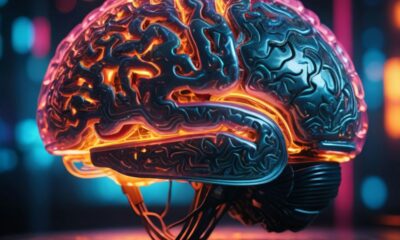People
Growing up in Science: Anne Urai
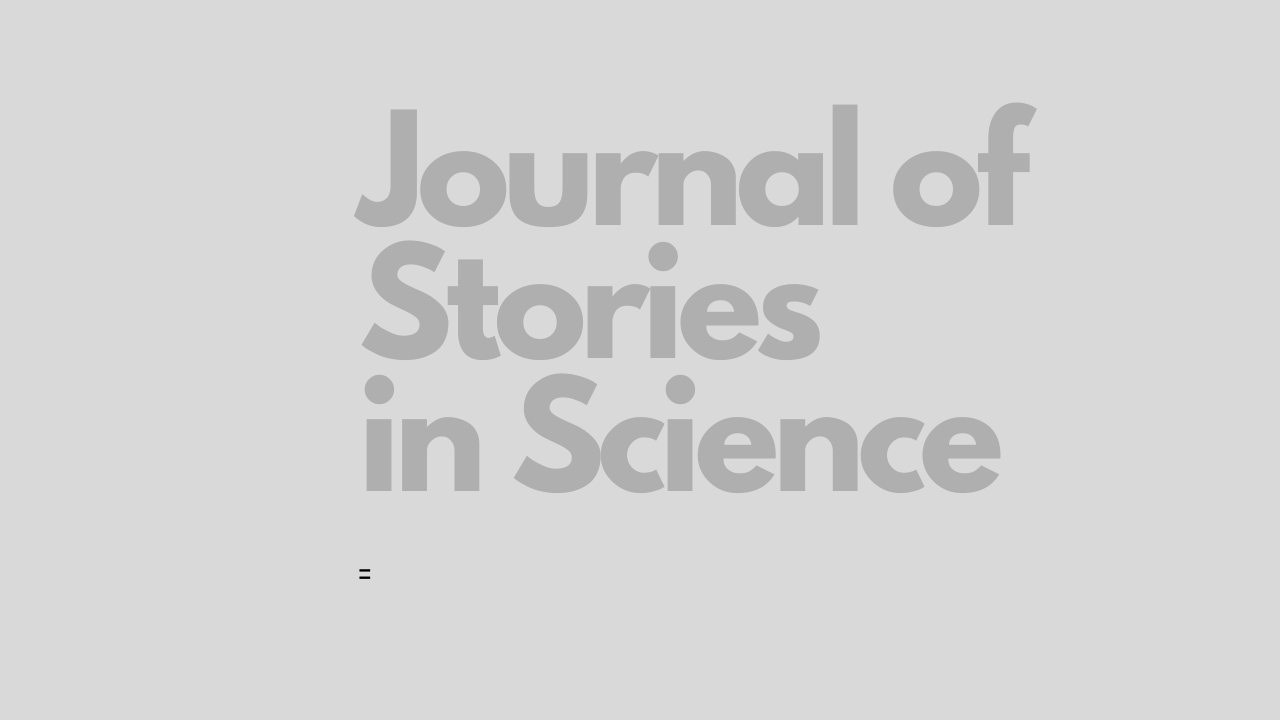
Anne Urai
[su_boxbox title=”About”]Dr. Anne Urai received her undergraduate degree in cognitive neuroscience and philosophy at University College Utrecht in 2010, followed by a masters in brain and mind sciences at University College London and Ecole Normale Superieure in Paris. She then pursued her doctoral research with Tobias Donner at the Universitätsklinikum Hamburg-Eppendorf and University of Amsterdam, investigating how our previous choices bias the way we interpret later information, and how this process is affected by the confidence in our decisions. Her PhD was awarded the NVP brain and cognition thesis prize, specifically for its combination of interdisciplinary methodology and open science approaches. As a postdoctoral fellow in Anne Churchland’s lab at Cold Spring Harbor in New York, she studied the neurophysiology of decision-making using high-density neural recordings in the mouse brain. During this time she was a core member of the International Brain Laboratory, working with a global team of systems and computational neuroscientists to assess the reproducibility of systems neuroscience. She joined Leiden University in The Netherlands as an Assistant Professor in 2020, and was awarded tenure in 2022. Dr. Anne Urai’s research focuses on the neural basis of decision-making across mammalian species, and the interaction between learning and perception. A current focus of her work, funded by an NWO Veni grant, is on changes in neural and behavioral noise across the lifespan. The story below is co-published with Growing up in Science. [/su_boxbox]
[dropcap]I[/dropcap]had a careless childhood. I was good at school, but could never quite decide on my passions. I dropped high-school physics and chemistry in a streak of rebelliousness, only to realize my mistake a year later and catch up over the summer break. In my first semester at university, I randomly signed up for several interesting-sounded courses and got into cognitive neuroscience and philosophy.
I loved both of them, deciding on the spot that I would solve all of psychology by studying the brain. I spent my exchange semester traveling and eating my way through China, and another year working soul-crushing sales jobs, herding sheep in France and ultimately following my boyfriend to backpack through Asia. In a hot Moroccan internet cafe, I read that someone would pay my to live and study in London and Paris for two years, which seemed too good to true!
During my masters, I pursued my fascination for consciousness research (usually reserved for retiring professors) which mostly involved staring at EEG wiggles in windowless rooms. As a friendly collaborator was fixing my atrocious Matlab code, he off-handedly mentioned that Tobias Donner had just started a lab in Amsterdam – conveniently close to the city where said boyfriend had just started a new job. With my heart racing I approached Tobias at a meeting, didn’t faint, applied for a fellowship, and started my PhD in his group.
Having made most of my MSc thesis figures in Excel, I suffered serious imposter syndrome, but discovered I actually quite liked the technical and programming parts of the job. I passed through a serious crisis halfway through the PhD: my initial proposal turned out to be severely underpowered, psychology’s replication crisis was in full swing, my advisor’s lab had moved to another country, and I hadn’t published a single paper.
My advisor’s gentle persistence, many yoga classes and an adopted cat helped me follow through, and I decided to give postdoc life a chance. After getting stuck in a snowstorm when interviewing at CSHL, I accepted the offer to join the Churchland lab, got married, and defended my PhD within a frantic 6-months!
Coming from a background in psychology and cognitive neuroscience, it was both frightening and exhilarating to work with ‘real’ neuroscientists. I had to learn soldering, surgery and bluffing my way through genetics. I loved being a part of the (then early-stage) International Brain Lab, but started feeling terribly homesick after 1.5 years on Long Island.
Just as I prepared to spend the summer doing data analysis in NYC, Covid-19 hit. Bored at home in lockdown, I opened a long-forgotten ‘Jobs’ email folder and saw a vacancy for a combined psychology teaching and research position in The Netherlands. Within short succession, I found out I was pregnant, got the job, and learned the Churchland lab would be moving to California! Choosing my rainy, flat home country over sunshine, I hurried to finish experiments and returned home just in time for maternity leave.
So far, I have survived my first year of sleep-deprived parenthood and my assistant professorship, which has turned into a tenured position by happenstance (i.e. union negotiations). While getting settled into faculty life, I regularly experience existential dread and wonders if writing scientific papers is what I should be doing for the next 35 years. Since my postdoc in the US, I am increasingly concerned about the climate crisis, and I spend my evenings thinking about decarbonizing academia and worrying about the future.
Metrics
Sessions
Total number of Sessions. A session is the period time a user is actively engaged with the page.
Visitors
Users that have had at least one session within the selected date range. Includes both new and returning users.
Page views
Pageviews is the total number of time the article was viewed. Repeated views are counted.
CivicSciTV
Spanish Edition: Science Communicator, Alessandro Strobbe, teaches scientific topics with humor

Alessandro Strobbe is a Peruvian science communicator with experience in public engagement through storytelling and creative writing. He also conducts research in science communication, critical thinking, and citizen science. He is most known as Doctor Trónico on social media, with his science popularization project for teaching science and skepticism with humor, using memes in social media. It has a range of 1-3 million prints per month, +500 creative writing columns, and +1000 graphic arts. His talk show Ciencia Picante, also uses language accessible to all audiences and creates an informal environment focused on the popularization of scientific studies and science engagement.
People
A Development enhancing tale with a microbial rich cocktail

Minisha Pereira
Dr. Minisha Pereira, Ph.D., is a Research scholar from Indian Council of Medical Research -National institute of Malaria Research, Field unit Goa, India. Her main area of Research is Vector biology which includes aspects of microbiology and molecular biology. Her recent publication titled “Characterization of midgut microbiome of Anopheles stephensi Liston” was published on March 2021 in Journal of vector borne diseases. The narrative below explores the story behind the unseen facts from her published work. She wants to bring the concept of her research in way which will be appreciated and also bring awareness to sustain public health. You can follow Dr. Pereira on Twitter @HMinisha.
Key Point
Spreading awareness among each other doesn’t need a lot support. But it necessitates a kind heart, a strong mind, and a never-fading goal. Let us identify the ways to save ourselves from vector-borne diseases and pests to live in harmony with nature and preserve the majority of useful insects. In these times of pandemic as we are living in anxiety and fear, Let us unite ourselves as beings and stop the spread of COVID far and near.[/su_boxnote]
With thoughts of COVID gushing in my mind, I was sitting down the lane next to my research lab during one evening time. Just then, I heard the conversations that got me stunned and startled. A conversation between two mosquitoes, sharing their knowledge and their thoughts. Curiosity and excitement gushed within me, leading to an elevated enthusiasm enforcing me to listen to their entire conversation.
The story was between two mosquito friends Anopheles stephensi and Anopheles subpictus who shared their thoughts about their current life status. So, without any delay, let us start the conversation replay…
An. subpictus: Hello!! My dear friend do you know we are at the brink of losing our significance because of COVID-19 outbreak globally??
An. stephensi: Do you feel so? My friends in scourges are already spreading Malaria. Luckily, the whole world around is so busy with the pandemic that they lost their focus on us.An. subpictus: Ohh great! But can we be as deadly as the virus?
An. stephensi: Deadly?? Stop misjudging yourself. We can be very fatal to all mankind, even though that’s not our intention. Our mission in life is to feast on their blood but, that cunning parasite (Plasmodium) that comes along during our bloody diet can cause sickly malaria. With chills and shakes, we can make an all-powerful man go crazy and also cold-hot-sweaty.
“A few decades ago, actually around 1987, our ancestors set their sight on the lovely state of Goa, just like tourists. We made such a Merry in Goa, dancing and feasting so much on the blood that hundreds of people were put down with malaria and some did not raise again. Yes! They were dead and gone. But then they took revenge on us and something horrible happened to us. These creatures, the humans, do not give up easily as they say.
An. subpictus: What did they do?
An. stephensi: They set up a big institute named ICMR-NIMR (Indian Council of Medical Research-National Institute of Malaria Research) to pack us off from Goa. The team NIMR chased us so much that we were so scared. Clever that they were, firstly they started learning everything about us, our lifestyles, our activities and behaviour. With their knowledge and expertise, they managed to attack our homes (breeding sites: artificial containers, wells, freshwater pools, stream margins, water storage containers, construction sites) affecting all our kids (immatures: larvae & pupae) thereby leaving us homeless using all different kinds of ways. If they had used DDT powder, nothing much would have happened to us as we can deal with it.
But they were destroying our homes, clearing the water, using bacterial powder where our kids thrive. And that was not enough, they started to release fish that would pick up our kids (larvae and pupae) and eat them in hundreds. (Mosquito cries).
An. subpictus: But then how did you manage to continue to survive?
An. stephensi: You see we may be small but we are powerful. Nature has created us much before man, who tends to relax and celebrate his successes. But we mosquitoes are serious about our living and keep doing our jobs even at night and produce batches of eggs every 48 hours and thus manage to survive being so potent and productive.
Hey! There is some big Office WHO in Switzerland where they discuss us. Can you imagine our power? They were saying our entire sister species put together; we globally kill more than 400 000 humans every year. We don’t spare pregnant ladies and young children. They are our first targets. But again, that clever man has an answer. They have started using insecticide-treated mosquito nets (ITNs) and preventive antimalarial medicines which are so effective that we are losing our sting power.
An. subpictus: Oh yea!! Then this Goa team trained their guns on me recently and started blaming me for spreading malaria parasites from sick to the healthy alongside you, stephensi. They have found this out using a special machine called PCR.
An. stephensi: Yes these ICMR guys have turned out to be a big threat to all of us the last few years. I even heard that a Ph.D. student Minisha (author) is also working on various kinds of bacteria in our tummy (midgut microbial diversity) which she is planning to use against malaria-causing parasite Plasmodium.
She has killed hundreds of us to study our bacteria. One of our friends who escaped her slaughter voiced out. This Minisha first gives them a special clean-up! She calls it surface sterilization of our babies and us and then cuts us open, reaches our stomach and crushes it, and puts it on some medium to multiply these bugs in our stomach and study them.
An. subpictus: Oh My God!! May their soul RIP!! What she must have done after that?
An. stephensi: I heard that she has recognized (identified) many of them and she is calling them by names. Using so many chemicals and complex methods she has identified bugs that are already dead in our stomach and fail to grow. I heard her calling this method as molecular technique Metagenomics. I have never heard of these difficult words. But, she says, her work can be very helpful for us too.
An. subpictus: How is that possible? On one side she is doing this to harm us and on the other, she is spreading this news? What is the basis? You don’t believe her blindly.
An. stephensi: She identified microbes from our friend’s midgut and matched them with those residing in the curing water habitat where our babies live and also matched them up with us who are jailed in her laboratory. I even heard her saying that some of these bugs (microbes) help us grow from babies (larvae and Pupae) to adults.
She claims that our friend’s breeding and their larvae feeding in the laboratory in tap water have different bacteria in their stomach than the one she identified from curing waters. Since field water is healthier and has more variety of these bacteria, I have started to lay my eggs in the field sites so that I have stronger offspring with greater immunity. Is not she crazy???
An. subpictus: Oh really? That’s cool!! I think even I should tell my friends to do the same.
An. stephensi: No doubt’s she is a crazy girl. She did not stop here. She even treated hundreds of our friends with an antibiotic (Tetracycline hydrochloride) and compared their life events with our friends from the field and Laboratory population. By doing this she studied the influence of the microbe on our life cycle. Our sisters who received this special treatment laid a fewer number eggs compared to others who did not. That means these tummy bacteria are important for us.
An. subpictus: But my friend, I am warning you because she may be doing something else to control us. It is possible that she may be doing this for the same purpose.
An. stephensi: whatever she does she will do to put us down. I heard she has got some bacteria common in water, our babies, and us.
She got different kinds of bacteria common in all the stages viz. water, larvae, pupae, male and female by a metagenomic approach. She also confirmed the presence of Pseudomonas along with few more microorganisms. She says she will try to manipulate them against us for vector control.
An. subpictus: oh no!! I think her research is going to be a big threat to all of us in Goa.
An. stephensi: yes indeed! This crazy budding Scientist is dangerous.
An. subpictus: what you think we should do now
An. stephensi: First let us go and show her our power. We both will go and bite her.
An. subpictus: No! We should avoid her. She may catch us and open our stomachs also.
An. subpictus: Then let us be smart and use her study in boosting our immunity just like humans, who are enhancing theirs against COVID-19 now days.
An. stephensi: How do we do that?
An. subpictus: Let us breed and drink water from curing water site, the water-rich in the microbiome. Her research showed an increase of Bacillus sp. in tap water while more diversity of microbiome in the curing water habitat. This will boost our immunity making us stronger and healthier.
An. stephensi: subpictus my friend, we had a very informative dialogue. I will surely inform all my friends and also see that they take the precautions.
An. subpictus: Yes indeed, in fact, I asked my friend to stay safe because I heard she is searching for some more mosquitoes for her further research. In short, humans are running away from the Coronavirus and we should from this mosquito girl. People do not understand that we don’t harm humans intentionally. Since we need blood for the sake of our eggs and the future. If that was not the need and requirement we wouldn’t have bitten them, unlike males who only feed on nectar for their survival.
An. stephensi: it’s the law of nature and no one can change that, ultimately, it’s the fight for survival and the fit shall survive.
An. subpictus: yes, so true I just hope now the pandemic subsides so that we regain our importance very soon.
An. stephensi: Don’t worry my friend, this autumn will be a new start for us and for all mankind let us hope for the same.
Ending the conversation, both the mosquitoes bid goodbye to each other and went away. As they dispersed, I was left pondering so many questions.
People
It takes a village: Creating engineered regulatory T cells to induce immune tolerance
Leonardo Ferreira: “What if we could avoid the need for HLA matching for successful organ transplantation without severely impairing the recipient’s immune system? Better even, what if we could use a mismatched HLA molecule present in the donor but not in the recipient and re-educate the recipient’s immune system to accept an organ with that foreign, non-self, HLA molecule as if it was part of the recipient, as if it was self?”

Leonardo M. R. Ferreira
[su_boxbox title=”About”]Leonardo M. R. Ferreira, Ph.D. is an Assistant Professor of Microbiology and Immunology and, by courtesy, of Regenerative Medicine and Cell Biology at the Medical University of South Carolina and the Hollings Cancer Center. He holds a B.Sc. in biochemistry from University of Coimbra, Portugal, and a Ph.D. in biochemistry from Harvard University. His recent publication titled “Precision Engineering of an Anti-HLA-A2 Chimeric Antigen Receptor in Regulatory T Cells for Transplant Immune Tolerance” was published by Frontiers in Immunology on Sept 20, 2021. The narrative below explores the story behind the published work. You can follow him on Twitter @enhancerleo or visit his lab website. Cover image provided by Dr. Ferreira. [/su_boxbox]
[su_boxnote note_color=”#c8c8c8″]
Key Points
- It takes a village to do science.
- Despite all the competition, scientists can be formidable team players.[/su_boxnote]

Dr. Leonardo Ferreira
[dropcap]O[/dropcap] ur immune system is usually seen as a highly organized army that protects us from foreign invaders, such as viruses and bacteria, as well as from cells deemed undesirable, such as stressed or cancerous cells or, more recently in history, cells transplanted from a different individual. This ability to distinguish self (our own tissues) from non-self (viruses, someone else’s cells) is at the core of the immune system. This is not always a black and white issue, however. Some elements are technically self, but are detrimental to the organism, such as stressed or cancerous cells, and are thus targeted for destruction – altered self. Others are clearly not self, but they are invited guests, helpful to the organism, such as commensal bacteria, and tolerance to them is created – extended self. Disruptions to this delicate balance are involved in many diseases. It is as important to be able to mount an immune response against a pathogen as it is to not mount an immune response against our own healthy tissues. And it is as important to ramp up an immune response against an infectious agent as it is to dial it down once that agent has been eliminated. Yet, errors do happen. In autoimmune diseases, such as type 1 diabetes and multiple sclerosis, the patients’ own tissues are recognized and destroyed by their immune systems. In COVID-19 infections, sometimes the immune system is overzealous and causes profound tissue damage past elimination of SAR-CoV-2 virus.

As the 200th publication, this story received the special celebratory badge above.
Immune tolerance, a state of unresponsiveness to specific antigens (structures recognized by the immune system), is sometimes called the Holy Grail of immunology, precisely because of how hard it has been to accomplish. But the key to accomplish it might lie in a subset of T lymphocytes: regulatory T cells. These cells, also known as Tregs, are dedicated to suppressing specific immune responses. They do this using a panoply of mechanisms, from soaking up a molecule (cytokine) needed for T cell responses (interleukin-2) and secreting anti-inflammatory cytokines (interleukin-10, TGF-beta) to directly killing or otherwise disabling antigen-presenting cells required to activate T cells. This multi-factorial nature might be why it has been so difficult to induce true immune tolerance using conventional drugs. Could we then use Tregs as living drugs to achieve a cease-fire in autoimmune diseases?
Type 1 diabetes (T1D) is caused by the selective killing of the insulin-producing beta cells of the pancreas by auto-reactive T cells, leaving the patients dependent on daily insulin injections to control their blood glucose. Failure to do so can lead to nerve damage, amputation, blindness and, in extreme cases, death. There is no definitive cure for T1D. The intervention closest to a cure is a pancreas or an islet transplant (islets are only 2% of the pancreas and can be transplanted via the portal vein into the liver instead of the whole pancreas). However, this approach is not without problems, as these transplants face two types of immune rejection: allogeneic reaction, where the recipient’s immune system recognizes the islet graft as foreign, and autoimmunity, where the recipient’s immune system marks beta cells for destruction. Not addressing these immune dimensions in islet transplant would be the equivalent of building a sand castle by the ocean: no matter how well-built the castle is, the ocean waves will wash it away.
What if we could avoid the need for HLA matching for successful organ transplantation without severely impairing the recipient’s immune system?
Central to immune rejection are the major histocompatibility complex (MHC) molecules, also known as human leukocyte antigens (HLA) in humans. First crystallized and structurally characterized by one of my PhD advisors in the 1980s at Harvard University, Jack Strominger (together with Don Wiley and Pamela Bjorkman), HLA molecules can be thought of as billboard proteins on the surface of our cells presenting protein fragments, epitopes, to circulating T cells. This is how the immune system can tell self from non-self. HLA molecules themselves are highly polymorphic; there exist more than 3,000 HLA alleles, with each one of us carrying 18 of them. In organ transplantation, HLA must be matched between donor and recipient if acute rejection is to be avoided. In addition, the patients are put in a regimen where they take several immunosuppressive drugs every day for the rest of their lives, compromising their ability to fight infections and cancers. Chronic rejection, however, is far from being solved, as the immune system eventually figures out that those transplanted cells don’t look quite right (in addition to major, there are also minor histocompatibility antigens, which are much less understood, for example).
What if we could avoid the need for HLA matching for successful organ transplantation without severely impairing the recipient’s immune system? Better even, use a mismatched HLA molecule present in the donor but not in the recipient and re-educate the recipient’s immune system to accept an organ with that foreign, non-self, HLA molecule as if it was part of the recipient, as if it was self?
Given the complexity of the immune system, the perfect candidate to create this new state of immune tolerance would be a complex cell – the Treg. Work by my postdoctoral advisors in the early 2000s at the University of California San Francisco (UCSF), Qizhi Tang and Jeff Bluestone, showed that islet antigen-specific Tregs can prevent and even reverse (if coupled with pancreatic islet transplant) autoimmune diabetes in non-obese diabetic (NOD) mice. What would it take to translate this success to humans? As it turns out, there are a few hurdles. First, antigen-specific Tregs are exceedingly rare, especially in peripheral blood, the most commonly used medium to access immune cells. Second, Tregs divide much less ex vivo than conventional T cells do, and they can become unstable and lose their identity and suppressive function if cultured for too long. Third, in many cases the antigens recognized by Tregs that could be relevant for a given disease are not even known.
How can we bypass these hurdles? If obtaining enough antigen-specific Tregs is so hard and we don’t always know what antigen specificity is best anyway, can we direct Tregs to where we need them to go in a different way? The answer is yes. Great progress has been accomplished in the cancer therapy world by engineering killer T cells with a chimeric antigen receptor (CAR). A CAR is an artificial immune receptor consisting of an extracellular antigen-binding domain linked to an intracellular signaling domain, driving T cell activation upon target recognition. The most successful example of this man-made T cell specificity is the use of anti-CD19 CAR T cells to treat CD19-positive leukemia. In an analogous vein, one can use a CAR that recognizes a molecule on the surface of the tissue of interest to direct Tregs there and stimulate them to inhibit ongoing inflammation.
It was time for a more drastic approach.
In the labs of Qizhi Tang and Jeff Bluestone at UCSF, we chose to focus on HLA-A2 (which, by coincidence, was the first HLA molecule crystallized by Strominger, Wiley, and Bjorkman at Harvard) as the target for a CAR Treg. HLA-A2 is a common allele, found in 30% of the population. Transplanting islets from an HLA-A2-positive donor into an HLA-A2-negative T1D patient recipient would then allow for anti-HLA-A2 CAR Tregs, generated from the recipient’s peripheral blood, to specifically protect the transplanted islets from immune attack. For the antigen-binding domain of this anti-HLA-A2 CAR, we took the heavy chain and the light chain of the variable region of an anti-HLA-A2 antibody isolated from a sensitized individual, a pregnant woman. As it turns out, some women develop antibodies against HLA molecules uniquely present in the fetus they carry, that is HLA molecules derived from the father and not present in the mother. We fused these anti-HLA-A2 variable heavy and light chains with a linker peptide to create a “single-chain variable fragment” – scFv – the most common extracellular domain used in CARs, and molecularly cloned it in a CAR lentivirus vector backbone with a CD28-CD3 zeta signaling domain, the most common signaling domain used in CARs.
In an ideal world, we should be able to create anti-HLA-A2 CAR Tregs in no time. But not so fast with this CAR. After many months of tinkering with alternative peptide linkers and hinges together with Yannick Muller, a fellow postdoc in the Tang lab, this anti-HLA-A2 CAR just would not express on the surface of primary human T cells. It was time for a more drastic approach. Luckily for us, Jim Wells’ lab, which focuses on protein and antibody engineering, was just a short drive away from us at UCSF’s Mission Bay campus. Trastuzumab, also known as Herceptin, was the first monoclonal antibody against a cancer target, HER2, to be approved by the FDA. It has also served to derive an anti-HER2 scFv to construct an anti-HER2 CAR. The antigen-binding portion of an antibody is found in its variable region, which comprises a light and a heavy chain. If one zooms further in, each one of these variable regions contains three “complementarity-determining regions” – CDRs.
Those CDRs are what determines antibody specificity. Hence, in collaboration with the Wells lab, we replaced the CDRs of an anti-HER2 trastuzumab-based scFv with the CDRs of our anti-HLA-A2 antibody. To our relief, not only did this “grafted anti-HLA-A2 CAR” express well on the surface of primary human conventional T cells and Tregs, but it also had the same exact specificity as the parent anti-HLA-A2 scFv! Of note, we went to great lengths to assess this grafted anti-HLA-A2 CAR. There are thousands of HLA alleles and while they can all be distinguished by one’s immune system, there are also immunogenic surfaces, known as “eplets”, that are shared across several HLA alleles. In the business of allorecognition, it is important not just what the CAR recognizes, but also what it does not recognize. By using human cell lines and primary human islets with different HLA haplotypes, as well as beads individually decorated with different HLA alleles, we determined that our grafted anti-HLA-A2 CAR recognized HLA-A2 but not any other HLA molecule (with the exception of HLA-A28, which was also recognized by the original anti-HLA-A2 antibody via a shared eplet).
With these anti-HLA-A2 CAR Tregs finally in hand, it was time to finally put them to test: could they suppress immune responses in a specific manner? A common model to test human Treg suppressive function in vivo is xenogenic graft-vs-host disease (GvHD). Injecting human peripheral blood mononuclear cells (PBMCs) into an Immunodeficient mouse, the NOD scid gamma chain mutant (NSG) mouse strain, results in widespread tissue damage and eventually death of the animal, as human T cells recognize and destroy the foreign xenogeneic mouse tissues. Co-injection with human Tregs should prevent GvHD. We took this model with two refinements. On the Treg side, we did not introduce the grafted anti-HLA-A2 CAR into human Tregs using lentivirus, as is commonly done. Instead, we used CRISPR/Cas9 to make a double strand break in the endogenous TCR locus (using a protocol optimized in Alex Marson’s lab in our building at UCSF) and delivered the grafted anti-HLA-A2 CAR gene in the form of adeno-associated virus (AAV), a non-integrating virus, flanked by sequences matching those of the endogenous TCR locus – “homology-directed repair”.
In this fashion, instead of having a random number of copies integrating at random places in the genome with the lentiviral approach, we ensured that each CAR Treg had exactly one copy (during VDJ recombination in T cell development, one TCR alpha allele is silenced, a phenomenon known as “allelic exclusion”) of the CAR expressed under the same gene regulation rules as the endogenous TCR would. Moreover, this reprograms Treg specificity by removing the TCR and replacing it with the anti-HLA-A2 CAR, instead of just adding the CAR specificity on top of the pre-existing TCR specificity. On the mouse model side, we used HLA-A2-transgenic NSG mice (from Jackson Labs). This way, both the PBMCs from a third party donor and our reprogrammed anti-HLA-A2 CAR Tregs were activated by HLA-A2 present in the host tissue, a more stringent test of in vivo CAR Treg function than if the HLA-A2 had been present in the attacking PBMCs, the standard in the field. Co-injecting anti-HLA-A2 CAR Tregs with PBMCs with HLA-A2 present in the system reduced animal mortality in half by 3 weeks post-infusion, with almost half of the surviving animals living as long as 3 months. Highly effective! This showed that our anti-HLA-A2 CAR Tregs are immunosuppressive in vivo specifically when their target, HLA-A2, is present.
In spite of these encouraging findings, several obstacles remain to implementing engineered Treg-based therapy for T1D.
Now back to T1D. To date, there is no widely accepted robust model of T1D in humanized mice. Nevertheless, what we could do was to use a molecule, streptozotocin, that, once injected, kills off all the beta cells in NSG mice, rendering them diabetic. We then transplanted HLA-A2-positive human islets collected from cadaveric donors into the kidney capsule, a highly vascularized site, of these diabetic NSG mice. Luckily, human insulin works on mouse cells and hence the mice where the transplant was successful ceased to be diabetic. We then infused intravenously firefly luciferase-labeled anti-HLA-A2 CAR Tregs. Thanks to firefly luciferase, we could image the anti-HLA-A2 CAR Tregs non-invasively inside living animals using their bioluminescence! By a quirk of destiny, the COVID-19 lockdown in San Francisco started precisely as this experiment was ongoing. It mandated that only one person could be in the lab at a time. Through a system of shifts, online calendars, and many emails and video calls, we managed to tend to these mice every single day: they required human interleukin-2 (IL-2) injection twice a day (Tregs depend on IL-2 to survive and unfortunately mouse IL-2 does not work on human cells and the half-life of human IL-2 is only 15 minutes), blood glucose testing every other day, and bioluminescence imaging every other day. Nonetheless, the results were well worth it: as the weeks went by, we could see the anti-HLA-A2 CAR Tregs go first to the spleen (on the left side of the animals) and then home in the HLA-A2-expressing islet graft in the right kidney and remain there. No changes in blood glucose occurred, signifying that the anti-HLA-A2 CAR Tregs did not negatively impact the islets they interacted with.
In spite of these encouraging findings, several obstacles remain to implementing engineered Treg-based therapy for T1D. First, it will depend on the stage of the disease; if enough beta cell mass has already been lost, it will need to be accompanied by transplantation of pancreatic islets. Second, it has been often challenging to grow enough Tregs to hit a therapeutic dose. Third, T1D pancreatic islets are depleted in IL-2 and enriched in inflammatory cytokines, thus hostile to Treg survival and stability. Moreover, pancreatic islets are the site of insulin production and Tregs react poorly to insulin. Of note, it is not clear how abundant Tregs are in islets of either healthy or T1D patients, as they might act mostly at the level of the pancreatic draining lymph nodes. But that shouldn’t deter us from targeting Tregs to islets to curb inflammation there, as the goal is to treat T1D, not recapitulate physiology. Finally, if Tregs from T1D patients may be inherently defective, then are they really the best candidates to treat the disease? Should we be looking at ways to repair Tregs from T1D patients for autologous therapy, or generate universally compatible Tregs from healthy individuals for allogeneic therapy?
The prize is much too large not to carry on.
It took a village to create these engineered anti-HLA-A2 CAR Tregs for these proof-of-concept studies, and I know it will take an even larger one to translate these findings into patients. But this experience taught me that we scientists – despite all the competition and deep thinking inherent to science – can be formidable team players. By combining expertise, clearly communicating not only goals but also failures and short-comings, and coordinating tasks even in the face of a global pandemic and its restrictions to movement and face-to-face time, we were able to go from the white board into engineering anti-HLA-A2 CAR Tregs into existence. The prize is much too large not to carry on. If successful, it could be the first in a wave of approaches using cells as living drugs to truly re-educate the immune systems of patients suffering from autoimmunity and inflammation.
Metrics
Sessions
Total number of Sessions. A session is the period time a user is actively engaged with the page.
Visitors
Users that have had at least one session within the selected date range. Includes both new and returning users.
Page views
Pageviews is the total number of time the article was viewed. Repeated views are counted.
-
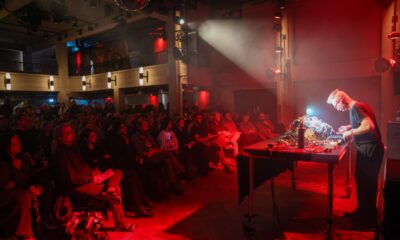
 CivicSciTV2 months ago
CivicSciTV2 months agoWhy public engagement is, and always has been and always will be, critical for science
-
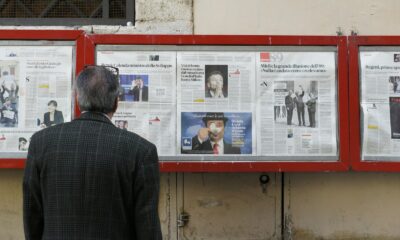
 Civic Science Times3 months ago
Civic Science Times3 months agoOpinion: The growing imperative for civic science journalism
-

 CivicSciTV4 months ago
CivicSciTV4 months agoIn the path of totality, poems on citizen science, & civic science fellowships! CivicSciTV News 1/15
-

 Civic Science Times3 months ago
Civic Science Times3 months agoLiving Proof: An example of when civic science enters the beauty world
-

 CivicSciTV5 months ago
CivicSciTV5 months agoColleen Kelley’s mission is to build molecular literacy through imaginative chemistry comic books
-
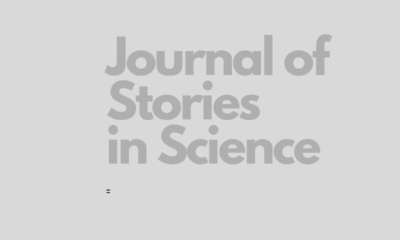
 People3 years ago
People3 years agoMy Career Path Following Water from the Mountain to the Sea and Across an Ocean
-

 Science Policy5 months ago
Science Policy5 months agoEmily Edwards: Public should have a front-row seat to the development of quantum science.
-
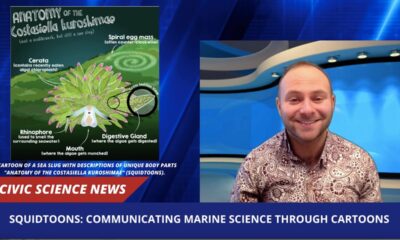
 CivicSciTV2 months ago
CivicSciTV2 months agoMaking science engagement fun, humor, science cartoons & SciTalk 2024! CivicSciTV News (Mar. 4)

